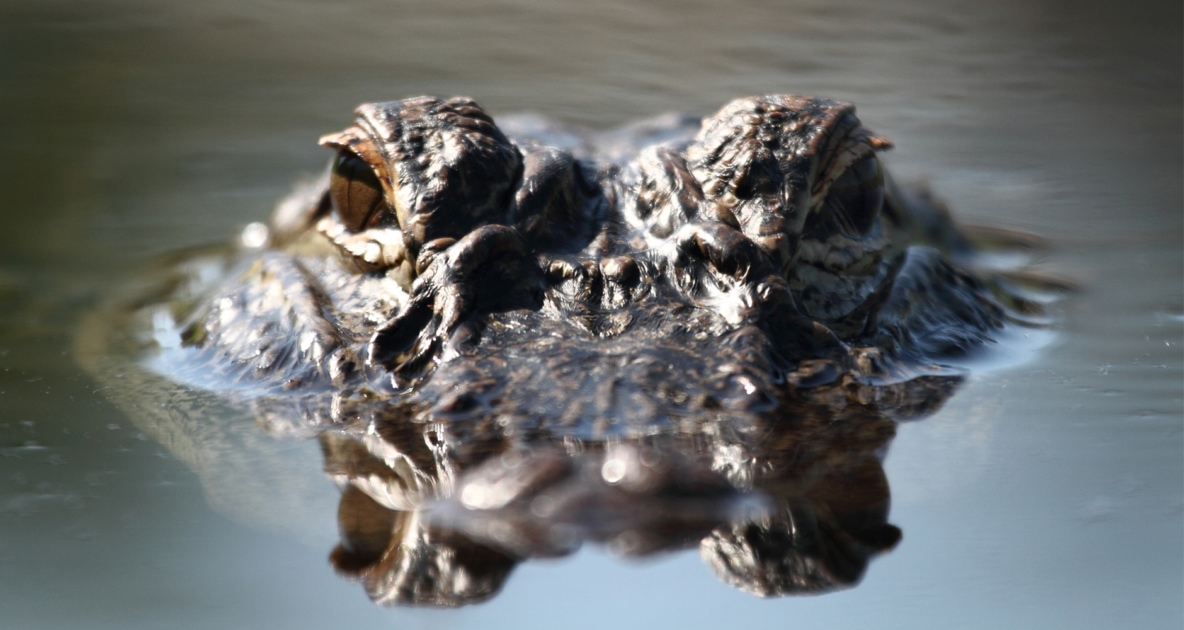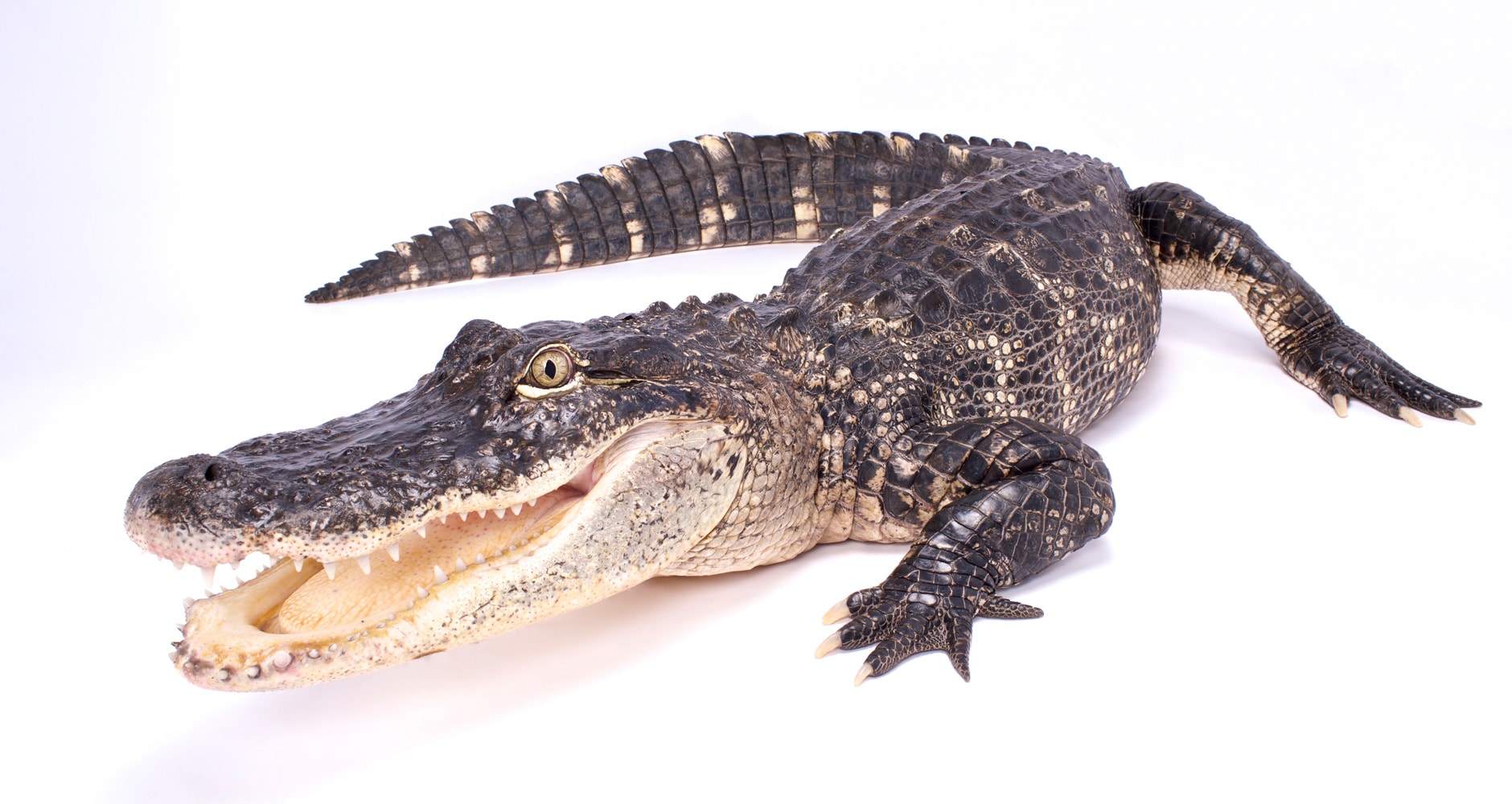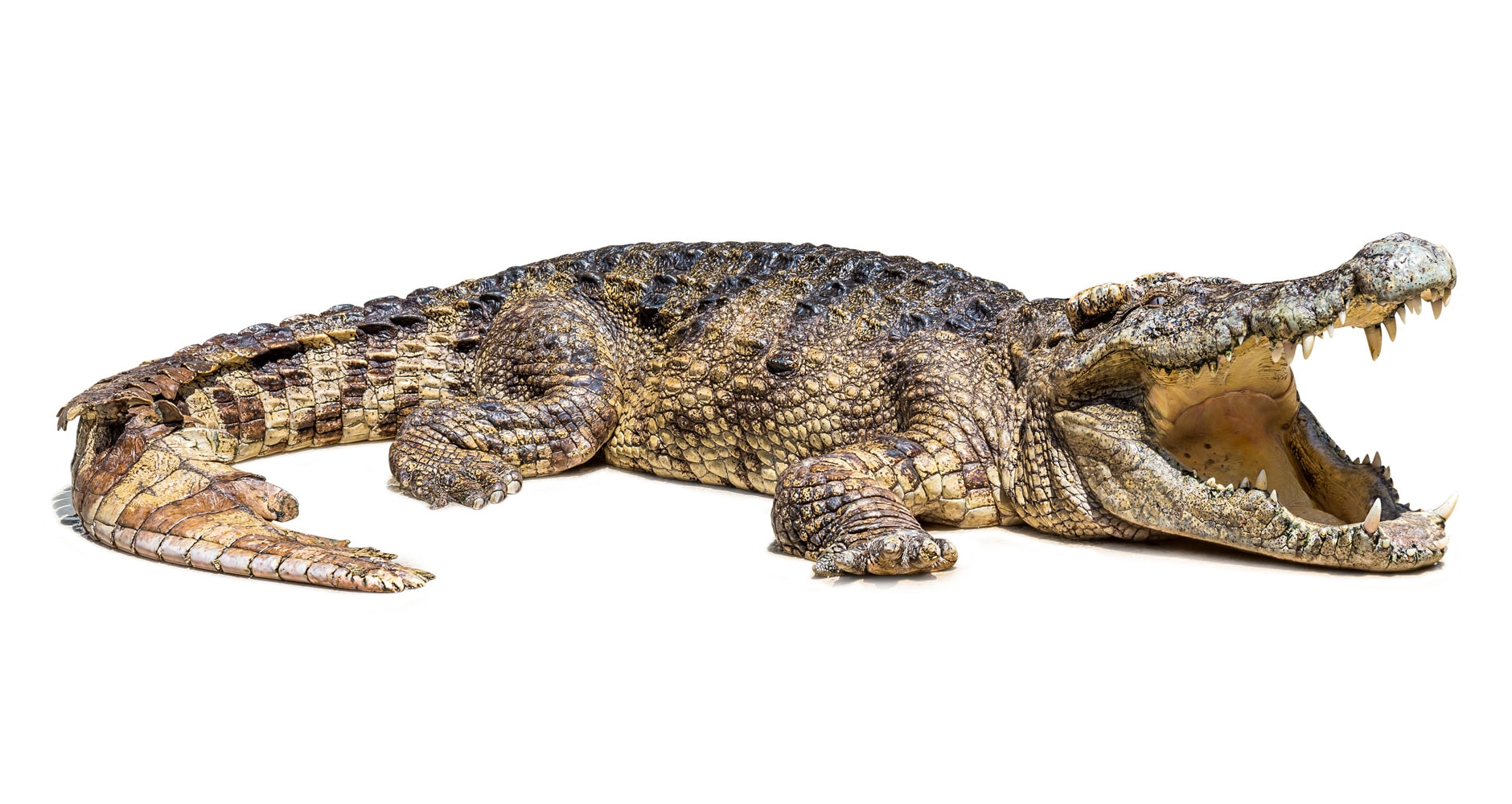Staying Safe in Alligator Country
Recreational outings in the alligators’ natural habitat can be an exciting, and safe experience when you understand and respect how they live, and take necessary, safety precautions.

Recreational outings in the alligators’ natural habitat can be an exciting, and safe experience when you understand and respect how they live, and take necessary, safety precautions. This intriguing, scaly creature with a massive tail and an abundance of sharp teeth got its name from early Spanish explorers and settlers in Florida. They called it ‘el legarto,’ or ‘the lizard.’ When the British acquired the Florida territory in the 1760s they adopted the Spanish term, and alligator has remained its English name ever since.
Interesting Facts About the American Alligator
(Alligator mississippiensis)
- Alligators primarily live in the wild in Florida and Louisiana, but can also be found in the states of Georgia, Alabama, South Carolina, North Carolina, Virginia, Mississippi, Texas and Oklahoma.
- It is estimated that the states of Florida and Louisiana each has an alligator population of more than one million, with a total population of 5 million alligators in the US.
- Alligators live in warm climates in lakes, ponds, swamps, and other slow-moving bodies of freshwater, but can also be found in marshes, and other brackish waters.
- Alligators are North America’s largest amphibious reptile, and are referred to as ‘living dinosaurs’.
- Young alligators feed primarily on insects, small fish, and amphibians. Adult alligators feed on fish, crabs, birds, other reptiles, snakes, turtles, raccoons, and other small mammals. Large alligators have been known to prey on larger animals like panther, deer, and bear.
- The males can grow up to 18 feet long and weigh about 1,000 pounds.
- Lifespan of alligators in the wild is about 35 years. In captivity, their lifespan can exceed 50 years.
- It has about 80 teeth. When one is lost, a new one grows in its place. Alligators can have up to 3,000 teeth in their lifetime. Once it has clamped down on a captured prey, it is nearly impossible to pry an alligator’s jaw open. Its teeth are strong enough to crush a turtle shell.
- Its powerful tail is as long as its body, and is used to propel it in the water, and to perform the death roll.
- Even though the alligator has short legs it can run quickly for short bursts, and has been known to climb chain link fences to avoid capture.
- Crocodiles differ from alligators in that they live only in salt water, are lighter in color, and have a narrow, v-shaped snout instead of a round one. Crocodiles are also more aggressive. In the U.S., crocodiles are only found in southern Florida.
- To defend its territory or to attract a mate during spring breeding season, alligators make a bellowing sound. Bellowing is done in a tail-arched, head-oblique position.
- Alligators are beneficial to the environment. They create deep pockets in swamp lands that retain water. During times of drought, many wetland animals survive on these alligator-made watering holes. Alligators also consume and help control the population of the invasive, nonnative nutria rodents. Young alligators help by eating insects.
What’s the Difference Between An Alligator and a Crocodile?
Staying Safe in Alligator Country
The Okefenokee Swamp in Georgia and Florida and the Everglades are two expansive, ideal places to view alligators in their natural surroundings. However, it is best to do so with an experienced guide, keeping your distance on an elevated dock or in a motorized boat.
Keep these facts and tips in mind when visiting gator country.
- Alligators are nocturnal, thus most active from dusk to dawn. Avoid being near the water’s edge or swimming during this key feeding time.
- Alligators lunge from still water to catch unsuspecting prey near the shoreline. It kills its prey by pulling it into the water to drown, or crush it. Keep dogs, cats, and small children away from the water’s edge, especially if there is vegetation present or if the water is murky.
- Alligators can be aggressive during spring mating season. Be extra cautious during this time.
- When fishing in fresh waterways, the bait and fish, or even birds flying and landing nearby can attract alligators. Never throw fish heads, bait, etc. into the water from your boat, dock or shore. My father rescued an injured bird from a lake. As he placed the bird in the boat, an alligator lunged out of the water and partially into the boat in pursuit of the bird. Fortunately the alligator slid back into the water and no one was hurt.
- Never feed alligators in the wild or throw food into the water. Alligators usually keep their distance from humans. However, once they become accustomed to being fed by humans it loses its innate fear and will approach. I experienced this firsthand while boating on the Okefenokee Swamp. We stopped briefly in the water to eat our packed lunch. As I opened a bag of pretzels, the rustling sound of plastic attracted an alligator, the same way it would our dog at home. It was apparent that others before us had fed this animal. As the ‘gator swam toward our small boat, we started the engine and quickly left the area.
- Alligators can also take up residence in neighborhoods and golf courses in ditches, canals, ponds, lakes, rivers, and other fresh or brackish water sources. Don’t attempt to retrieve golf balls from the water where alligators may be present. Stay clear of alligators basking on the green in the sunshine.
- Don’t assume alligators aren’t present because you don’t see one. In the swamps, it is difficult to distinguish an alligator in the water from a cypress knee. Alligators can stay submerged beneath the water for more than two hours, and rise up like quiet submarines. You won’t hear it approaching.
- Alligators are territorial and very protective mothers. Never pick up a baby alligator or an egg you find in a nest. Most alligator bites occur when people try to pick up or capture the animal.
- While the number of bites and fatalities from alligator attacks remains extremely low, if you or someone near you is attacked, thrash around, kick and resist being pulled into the water. To defend yourself, go for the gators eyes, if possible. Seek medical help immediately for all injuries involving alligators.
- Teach your family about the alligator before venturing into their natural habitat. Children will enjoy this informative coloring booklet on American alligators you can print from the Florida Fish and Wildlife Commission.

Deborah Tukua
Deborah Tukua is a natural living, healthy lifestyle writer and author of 7 non-fiction books, including Pearls of Garden Wisdom: Time-Saving Tips and Techniques from a Country Home, Pearls of Country Wisdom: Hints from a Small Town on Keeping Garden and Home, and Naturally Sweet Blender Treats. Tukua has been a writer for the Farmers' Almanac since 2004.








We live here in Venice, FL and see them often – am planning to send this to everyone on my list.